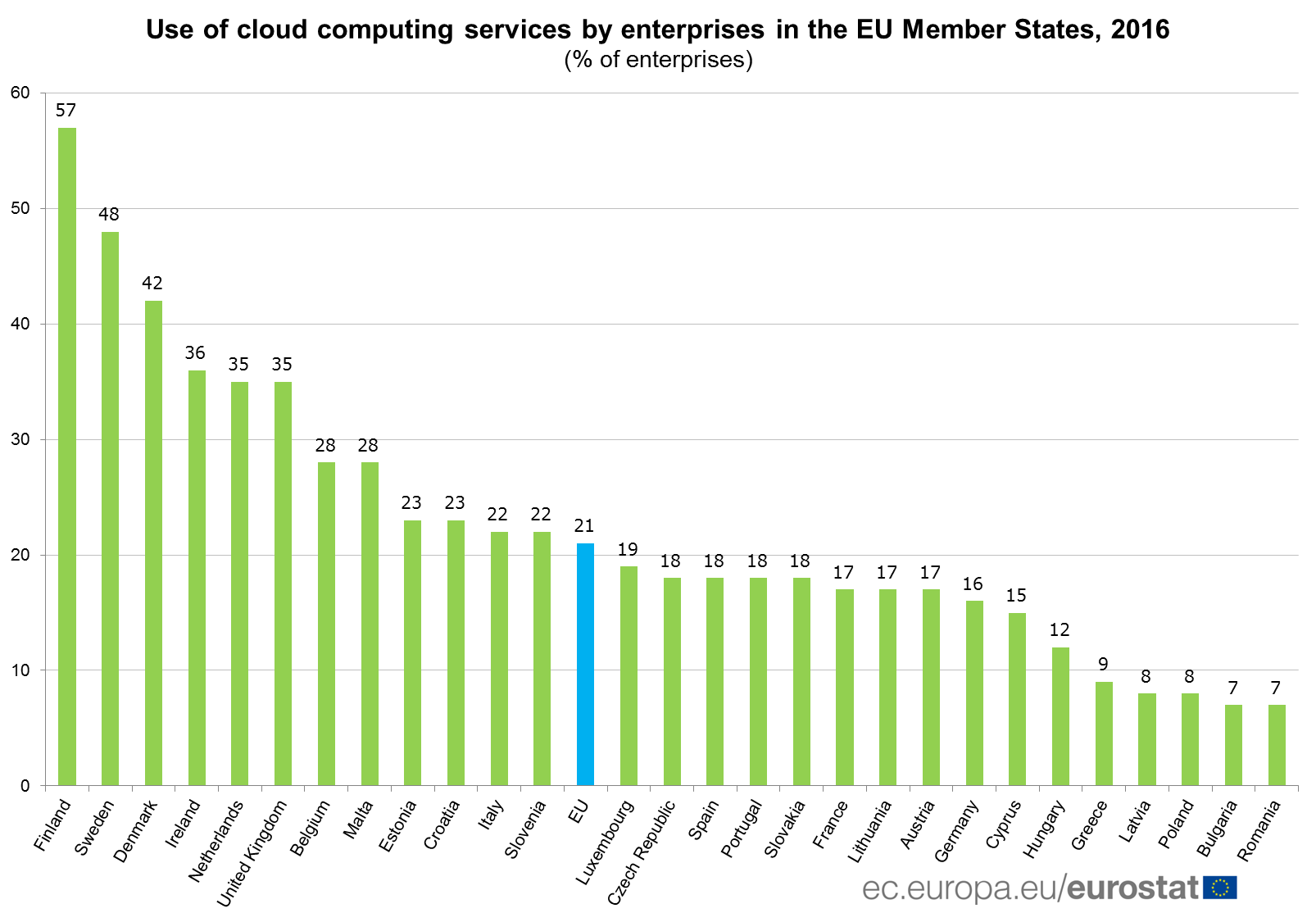Enterprises can access computing resources hosted by third parties on the internet instead of building their own IT infrastructure. This shared pool of resources is most commonly known as “cloud computing”. As cloud services are provided online, enterprises must have internet access to be able to use them. In 2016, 97% of EU enterprises employing 10 persons or more had this access. Although the share of firms with internet access was at very similar high levels across Member States, only one in five (21%) used cloud computing services in 2016.
Cloud computing most commonly used in the Nordic Member States
Significant differences can be observed across the EU Member States. More than half of enterprises used cloud computing in Finland (57%), and over 40% in both Sweden (48%) and Denmark (42%). At the opposite end of the scale, cloud computing services were used by less than 10% of enterprises in Bulgaria and Romania (both 7%), Latvia and Poland (both 8%) as well as Greece (9%).
Cloud computing mainly used for e-mail and storage purposes
Of the enterprises that reported using cloud computing, two-thirds (65%) opted for a cloud solution to host their e-mail systems. About six in ten (62%) used the cloud for storing files in electronic form, some 44% used it to host their database(s) and 41% for office software (e.g. word processors, spreadsheets, etc.). Most importantly, enterprises also used the cloud to access more advanced end-user software applications, such as financial/accounting (32%) and managing customer relationships (27%). In addition, 21% reported using the cloud computing platforms to harness computing power to run their own business software applications.
More detailed information is available in a dedicated Statistics Explained article.


